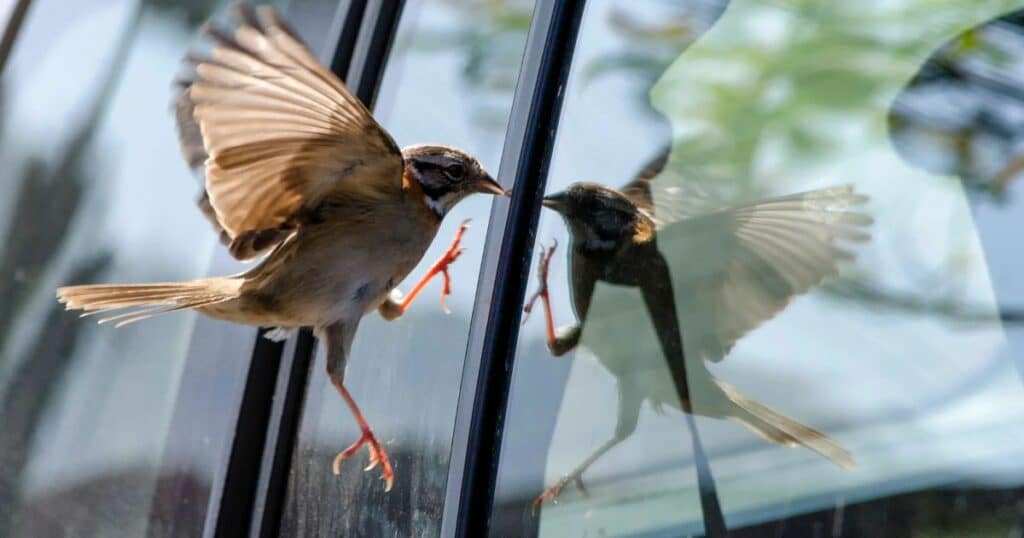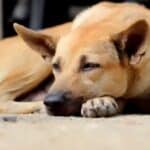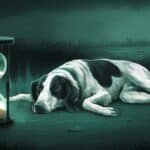Have you ever been startled by that heart-wrenching thud of a bird hitting your window? If so, you’re not alone. Bird collisions with windows are a silent epidemic, affecting homeowners across the USA and UK. It’s a problem that’s both widespread and often overlooked. But here’s the good news: once you understand why bird strikes happen, you can take simple, effective steps to prevent window collisions and create a bird-safe environment around your home.
The Surprising Reasons Birds Fly Into Windows
To solve this problem, we first need to understand our feathered friends and their unique perception of the world.
Bird Vision: Not Quite 20/20
You might think birds, with their keen ability to spot tiny insects or seeds from afar, have perfect vision. But when it comes to windows, their vision plays a surprising role in window strikes. Unlike humans, birds have eyes on the sides of their heads. This gives them a wider field of view—great for spotting predators—but it reduces their depth perception.
“Birds’ visual systems are adapted for tasks we can hardly imagine, like detecting UV patterns on flowers or magnetic fields for navigation. But this incredible specialization comes at a cost when they encounter human-made structures like glass windows,”
explains Dr. Christine Sheppard of the American Bird Conservancy.
Imagine trying to judge distances with your eyes on the sides of your head. That’s the daily challenge birds face, making it tough for them to recognize glass as a barrier.
MORE POST: How Long Does It Take To Hatch Bird Eggs? A Journey Through Avian Life Cycles
Glass Windows: Nature’s Invisible Trap
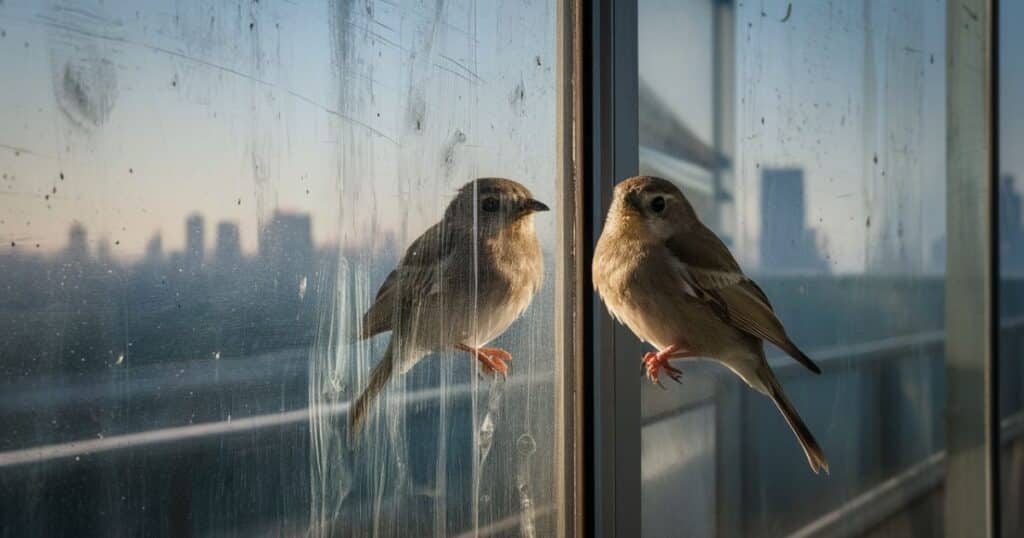
To a bird, a window is either invisible or a mirror. Glass manifestation—the reflections and transparency of glass—is a major culprit in bird collisions. My neighbor’s bay window is a perfect example. It reflects her lush garden so accurately that even I’ve almost walked into it, Now, imagine a bird, already challenged by depth perception, facing this deceptive reflection.
- Transparent glass looks like open air to birds. They see your houseplants or the room beyond and try to fly through.
- Reflective glass mirrors the sky, trees, or your bird feeder. Birds aim for these reflected habitats, unaware of the glass barrier.
| Window Type | How Birds Perceive It | Risk Level |
| Transparent | Open flyway | High |
| Reflective | Extension of habitat | Very High |
| Tinted/Low-E | Less reflective, but still transparent | Moderate |
Can a Bird Really Break Your Home Windows?
A common question is whether birds can damage your windows. Generally, most window strikes won’t break standard residential glass. However, larger birds like geese or raptors might cause damage. But let’s put this in perspective:
- A broken window can be replaced.
- A bird’s life, once lost, is irreplaceable.
The Cornell Lab of Ornithology estimates that up to a billion birds die from window collisions annually in the U.S. alone. That’s a staggering number, especially considering the vital roles birds play in our ecosystems—from pest control to pollination.
How to Stop Birds from Flying Into Your Windows
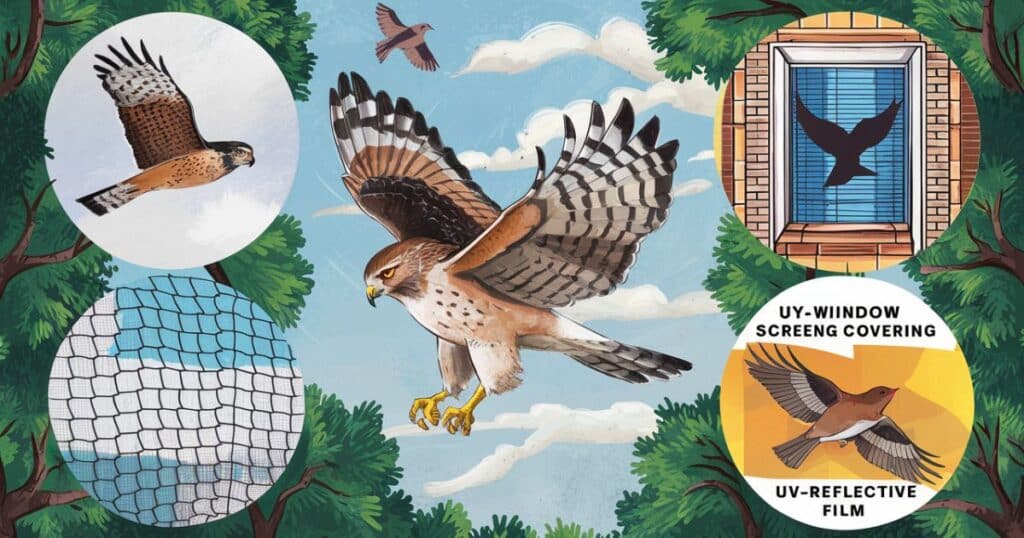
Now that we understand the problem, let’s dive into solutions. These bird-friendly techniques are humane, effective, and often enhance your home’s aesthetics.
Make Your Glass Visible: DIY Bird Savers
The key is to make your windows visible to birds. You don’t need expensive solutions; everyday items can work wonders:
- Window Decals: Use bird window stickers or decals. Place them 2-4 inches apart to create a pattern birds can see.
- Tape Patterns: Use white tape to create stripes, grids, or fun shapes.
- Soap or Paint: For a temporary fix, draw patterns with soap or washable paint.
I tried the tape method, creating a whimsical tree pattern on my home office window. Not only did it stop bird strikes, but it also added a charming, artistic touch to my workspace.
Relocate Bird Magnets: Feeders and Baths
Your bird feeder or bird bath might be contributing to collisions. Here’s how to position them safely:
- Very Close (0-3 feet from the window): Reduces impact force if a collision occurs.
- Far Away (30+ feet): Gives birds space to maneuver and recognize the window.
“After moving my hummingbird feeder right next to the window, those tiny acrobats still visit, but the crashes have stopped,”
shares Sarah, a backyard birding enthusiast from Kent, UK.
Screen Time for Birds
Adding screens to your windows is like giving birds a gentle safety net. The mesh makes the glass visible and cushions any impacts. Since I screened my home office window, bird collisions dropped to zero.
| Screen Type | Bird Safety Level | Light & View Impact |
| Standard Mesh | High | Minimal |
| Solar Screens | Very High | Moderate (but improves energy efficiency) |
| Exterior Screens | Highest | Varies |
Reflect on Reflections: Reduce Window Glare
Reflections are a major cause of bird strikes. Here’s how to reduce them:
- Low-E or Low-Reflectivity Glass: Great for new windows or replacements.
- External Shades or Awnings: Reduce reflections and add style.
- Window Film: Apply UV-reflective or lightly tinted films.
Think of it as putting sunglasses on your house to reduce glare. Window World, a leader in window replacement, offers low-E glass options that are great for bird safety and energy efficiency.
Nighttime Strategies: Lights Off, Curtains Closed
Did you know some birds migrate at night, using stars for navigation? City lights can disorient them, leading to collisions. Make your home bird-friendly after dark:
- Turn off unnecessary lights.
- Close curtains or blinds.
- Use motion sensors for outdoor lighting.
A Case Study in Chicago: The “Lights Out” program, where buildings dim lights during migration seasons, has reduced bird collisions by up to 80%!
Bird-Deterrent Solutions: From Stickers to Films
Let’s explore some product-based solutions that merge bird protection with home aesthetics.
Window Stickers: Stylish Bird Protection
- Decorative Decals: From elegant frosted designs to colorful patterns, these decals add personality while preventing bird collisions.
- Bird Window Stickers: Designed specifically for bird strike prevention, these often have UV patterns visible to birds but subtle to humans.
My kids loved picking out bird-friendly stickers—it became a fun, educational project about bird safety. We chose a mix of butterfly and leaf patterns that blend beautifully with our home decor.
Correctly Installing Bird Strike Window Stickers
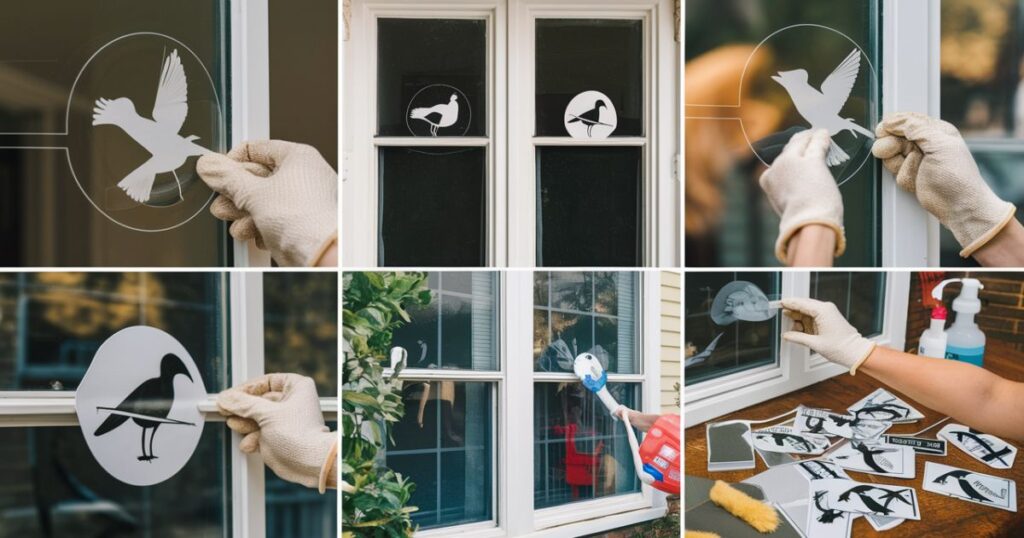
Proper placement is key:
- Density: Place stickers 2-4 inches apart. This creates a “visual barrier” for birds.
- Location: Outside is best (birds see it first), but inside works if needed.
| Sticker Spacing | Effectiveness | Aesthetic Impact |
| 2 inches apart | Highest | More Visible |
| 4 inches apart | High | More Subtle |
| Random/Sparse | Low | Minimal |
Window Films: The Invisible Shield
UV-reflective window films are a game-changer. They make glass visible to birds (who see UV light) while maintaining your view.
“I applied UV-reflective film from Window World. My view is unchanged, but the bird strikes have stopped completely,” reports Michael, a homeowner in Maine.
These films also boost window energy efficiency, a win for birds and your energy bills.
Safeguarding Windows: From Old Homes to New Builds
Whether you’re in a historic Victorian or building a modern eco-home, there are bird-friendly options.
Old Home Solutions: Retrofitting for Birds
- External Shutters: Add charm and bird protection.
- Sunshades or Awnings: Reduce reflections and add character.
- Netting: A subtle, effective barrier in high-risk areas.
Case Study: “My 1890s home in Boston now has charming exterior shutters,” shares Emily, an architectural historian. “They’re period-appropriate and have made my windows bird-safe. It’s like bird-proofing with historic flair!”
New Builds and Remodels: Think Bird-First
- Fritted or Patterned Glass: Embedded patterns make glass visible.
- UV-Reflective Glass: Invisible to us, a clear signal to birds.
- Angled Windows: Reduce reflections and direct bird collisions.
“We’re seeing more clients request bird-safe windows,” notes Architect David Green. “It’s the future of eco-friendly, wildlife habitat-conscious design.”
First Aid for Feathered Friends: Helping Collision Victims
Despite our best efforts, accidents can happen. Here’s how to help:
Immediate Response to a Window Strike
- Check if the bird is stunned or injured.
- Place it in a small, dark box lined with a soft cloth.
- Keep it warm and quiet for 30 minutes to an hour.
- Release in a safe area if it recovers.
Last spring, a sparrow hit my window. An hour in a shoebox in my quiet laundry room, and it flew off, good as new.
When Birds Need More Help
For injured birds, time is critical. Contact a wildlife rehabilitator:
- USA: Find rehabbers via your state’s wildlife agency or Wildlife Rehab Info Directory.
- UK: Contact the RSPCA or RSPB.
Remember, it’s illegal to keep wild birds as pets in most areas. Professional care gives them the best chance.
The Bigger Picture: Birds, Buildings, and Biodiversity
Our efforts to prevent bird collisions go beyond our windows; they’re part of a larger commitment to biodiversity.
Staggering Statistics: Billions of Birds at Risk
- Up to a billion birds die from window strikes in the U.S. annually.
- In the UK, it’s estimated that 100 million birds collide with glass yearly.
- Species like goldfinches and warblers are particularly vulnerable.
Each bird plays a role in our ecosystems. By preventing window collisions, you’re supporting pest control, pollination, and seed dispersal.
Eco-Friendly Choices: Beyond Your Window
- Plant Native Species: Provide natural food and shelter. Grasses for birds like switchgrass or native berries are perfect.
- Reduce Other Hazards: Keep cats indoors, avoid pesticides.
- Support Bird-Friendly Policies: Encourage your city to adopt bird-safe building codes.
Community Action: In my neighborhood in Atlanta, we started a “Native for Nature” project. We planted bird-friendly shrubs and installed bird-safe windows. The result? A 70% drop in local bird strikes and a delightful increase in avian visitors.
Window World: Your Partner in Bird-Safe, Beautiful Windows
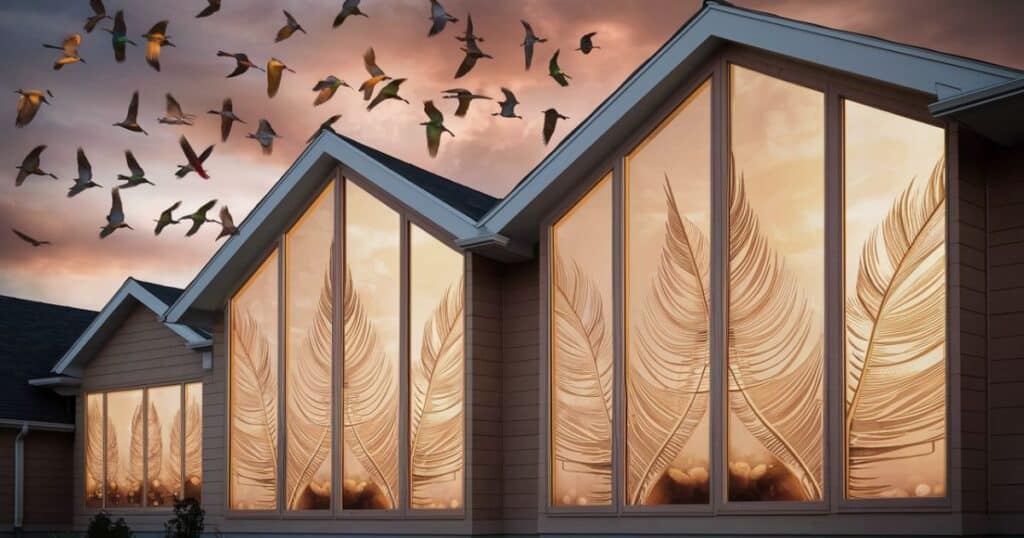
Choosing the right windows is crucial for both bird safety and your home’s look and feel. Window World stands out as a partner in this mission:
- Bird-Safe Glass Options: From low-E glass that reduces reflections to UV-reflective options that are invisible to humans but clear to birds.
- Professional Installation: Proper installation ensures maximum effectiveness of bird-friendly features.
- Energy Efficiency: Their windows not only save birds but also reduce your energy costs.
“Window World helped us choose windows that are beautiful, energy-efficient, and bird-safe,” says Laura, a homeowner in Surrey. “It’s amazing to watch birds fly up to the window, recognize it, and veer away safely.”
When it’s time for window replacement or a new build, make Window World your first call for windows that protect birds without compromising on style or efficiency.
Conclusion: A Brighter Future for Birds
We’ve journeyed through the whys and hows of bird collisions with windows. It’s a problem rooted in the marvels of bird biology—their unique vision and navigation skills that aren’t adapted to our glass structures. But it’s a problem we can solve.
By making our windows visible with decals, films, or simple DIY solutions, we turn potential death traps into safe zones. By thoughtfully placing bird feeders and baths, we create harmony between our love for backyard birding and bird safety. And by choosing bird-friendly windows from providers like Window World, we seamlessly integrate bird protection into our homes’ design and function.
Remember:
- Every window you make bird-safe is a victory.
- Each feeder placed thoughtfully is an act of kindness.
- And every bird-friendly window you choose is an investment in a healthier planet.
As the Audubon Society reminds us, “Birds are the ambassadors of the natural world.” By preventing bird collisions, we’re not just saving individual lives; we’re preserving the tapestry of songs at dawn, the flash of colorful wings in our gardens, and the delicate balance of our ecosystems.
So, take action today. Apply those window decals, move that bird bath, or call Window World for an upgrade. Together, we can make our homes havens for humans and birds alike, ensuring that the only thing flying into our windows are the sun’s warm rays and the melodies of our feathered friends.
ALSO READ THIS POST: Do Birds Fly At Night? Unraveling The Mysteries Of Avian Nocturnal Behavior
Faq’s
How do I stop birds from flying into a window repeatedly?
Use bird-friendly techniques like window decals, UV-reflective window film, or external screens to make glass visible. Place feeders either very close (0-3 feet) or far (30+ feet) from windows to reduce collisions.
What causes birds to fly into windows repeatedly?
Birds don’t perceive glass as a barrier; they see reflections of sky or habitat, or view through transparent glass as open flyways. Their side-set eyes give poor depth perception, making it hard to judge distances to windows.
Do window stickers prevent bird strikes?
Yes, bird window stickers or decals are highly effective when placed correctly. Use patterns with stickers 2-4 inches apart to create a visible barrier for birds, reducing window strikes.
What to do when a bird flies into your window?
Place the bird in a small, dark box lined with soft cloth for 30-60 minutes to recover from shock. If it doesn’t recover or seems injured, contact a local wildlife rehabilitator for help.
Does window film prevent bird strikes?
Absolutely. UV-reflective window film makes glass visible to birds (who see UV light) while maintaining your view. It’s an excellent solution for preventing bird collisions without aesthetic compromise.
Do birds recover from flying into windows?
Many birds, if not injured, recover from the initial shock of a window strike after a short rest. However, some may have internal injuries, so monitoring or professional care is crucial for their survival.

Davin Connor is an experienced author with 3 years in pets writing. Known for concise, informative content, he shares expertise on pet care, behavior, and health through his engaging articles.
